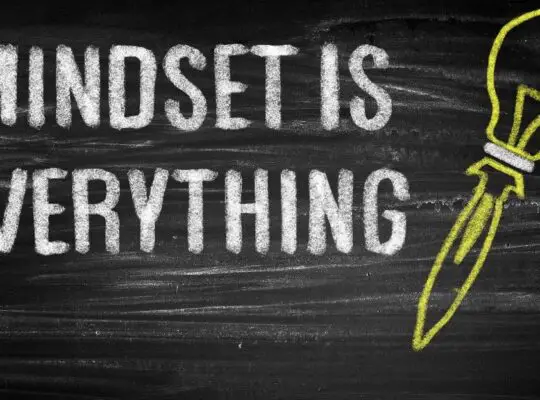Once Upon A Time, There Was No Internet!
Children would go outside and ride their bikes with friends until the sun went down and parents whistled for them to come home. In the evenings, they would read, look at the stars, and tell ghost stories.
When bored, they used their imaginations. These are all things available to us now. Yet, we typically grab a gadget instead. We just can’t abide boredom. Then we mumble under our breath about how the youth never play outside, as though we aren’t equally guilty of the same now.
There was a point at which everything changed. Cellphones become popular in the early 2000s. Before that, most people didn’t have one. From that point, just about everyone and their 10-year-old had one. Then smartphones arrived and the world forever changed.
We unconsciously slide our phones open and tap a social media app. We quickly realize that we did this exact same thing just two minutes ago and close the app swiping through the rest to find something to do. We have forgotten how to be bored.
Before, these idle moments would be filled with boredom, which leads to daydreaming. And, daydreams fuel creativity.
Instead, you check your email obsessively, even when you aren’t expecting one. You surf the web the moment you have downtime. It’s easy to make excuses, too. Social media keeps you connected to the people who no longer live nearby. You want to keep in touch, right?
When you’re in a waiting room, you don’t have to read the expired magazines. You have your phone. When you’re waiting in line at the grocery store, you don’t need to browse tabloid covers. You have your phone. When you can’t get to sleep at night, you don’t need to worry about it, you have your phone.
It doesn’t seem like that much of a problem. The mental clutter in your mind begs to differ. Your creative spark would also like to lodge a formal complaint.
The best way to increase mental creativity is to embrace boredom. In boredom, you’re allowed to explore the recesses of your mind and trigger a wave of creativity to carry you through.
Let Your Mind Wander Away
Where do your ideas come from? Typically, associative thinking is the most productive way to do this. Which means you let your mind wander, muse, and reflect.
It’s a veritable brainstorm of creativity that throws up different thoughts and ideas for you to ruminate on. For example, you read an article that has caused you to cast your mind back to your youth. If you allow yourself the opportunity, you can let your mind wander the memories that have been triggered by this content.
In your mind’s eye, you can walk those streets again, think about those people, and your mind will wander as it will. You may find that in no time at all, you suddenly have ideas pouring out of you.
This isn’t just us saying it. There have been studies on the subject, too! One study, from the University of Central Lancashire, included 80 participants (ref.). They were invited to come up with uses for a pair of plastic cups. In a direct challenge to their creativity, the challenge was to come up with as many uses as possible. The group was split in half.
Half of the group were asked to copy numbers from a phone book before they completed the creative exercise. That is the group who performed better in the creative task. Coming from a state of boredom was key to their ability to produce as many solutions as possible for this one task. In another iteration of the same study, the group was split into three.
The third group read the phone book and they outperformed the group who completed no exercises, as well as the group that copied numbers from the phone book.
This isn’t the only study on the subject. Penn State professors enlisted 100 students to join their study (ref.). They were shown a series of clips meant to elicit a variety of emotions such as elation, relaxation, boredom, and distress. Then, the students were complete a test. This test required them to complete a series of related word.
The test gave them the first three related words and it was up to the student to add a fourth word. This was to measure their ability to engage in associative thinking. The people who performed the best on the associative thinking test were the students who had been bored (or elated) by the series of video clips they watched.
The students who were relaxed or distressed didn’t do so well. Additionally, the students who were bored (or elated) experienced more activity in the creative right hemisphere of their brain.
The data quite clearly shows that by embracing boredom you can increase mental creativity. This is exciting news for those of you who daydream during business meetings. Even more exciting for those of you who are in great need of boosting your mental creativity.
The Upside to Boredom
Do you know what else is great about boredom? It spurs you into action. Now, we already discussed how experiencing a single second of boredom sends us running to our gadgets. Now that you know how powerful boredom can be, though, you can use it to motivate you.
No one enjoys boredom, it’s why we try so hard to avoid it. Once you have embraced that boredom to kick-start your creative spark, use it to act! Set goals, seek out new experiences, put your creativity into action.
You should look at your boredom as a mental cue or, a set of them. It’s a cue into how you really think or feel. It could be saying that you’re not comfortable where you are anymore. It might be suggesting that you feel trapped or unchallenged.
Your boredom cues are an important hint that you’re in need of change. This is one of the reasons it’s so important to allow yourself to stew in your boredom. If you immediately turn to your smartphone for entertainment in a moment of boredom, then you will be less motivated to act on the insights your boredom is offering.
To put it all into context, according to a Nielsen report published in 2018, the average American spends just over eleven hours of their day consuming media (ref.). That’s outrageous. When you factor in sleep, you spend the majority of your day consuming media. No wonder your creativity is stifled. There’s no time for inner reflection, peace or boredom.
Now, before we dive deeper into the subject of boredom and how you can increase mental creativity by embracing it, we must discuss the various types of boredom.
5 Types of Boredom
Some of these are more appropriate for triggering creativity.
1|Searching
A searching boredom causes a feeling of restlessness, one where you actively seek different ways to quench the thirst of your boredom. This is typically done with hobbies and interests.
2| Apathetic
Apathetic boredom runs deeply. It’s a negative mindset that is linked to feeling helpless and engaging in destructive behavior.
3| Indifferent
This type of boredom is the neutral one. People are calm in this boredom but withdrawn. The best way to describe indifferent boredom is cheerful fatigue.
4| Reactant
Aggression typifies reactant boredom. It causes people to leave the situation, avoiding anyone responsible for creating the issue. When experiencing reactant boredom people persistently think about specific situations that are better than the one, they’re in currently.
5| Calibrating
This is wandering thoughts and being unsure of what to do. This is common while tackling repetitive tasks. This, along with indifferent boredom, are the perfect types of boredom to invite creativity.
Get Bored
Now that you are armed with this critical information, what will you choose to do with it?
You can re-acclimatize to boredom. How can you do that?
You can start by getting back into the habit of daydreaming. When you log onto social media or start browsing your favorite store online, you activate the reward system of your brain. This is the same pathway that triggers the release of feel-good chemicals, just as drugs and alcohol do. The more you perform activities like this, the more your brain wants it.
So, as you continue to avoid boredom and embrace mindless activities that provide your brain with a reward, the more difficult it will become to indulge boredom. Instead of grabbing your phone in a moment of boredom, walk away from it and stare out a window instead.
This is going to help you reset your brain’s neural pathways and encourage you to allow boredom. When you refuse to indulge the urge, you’re providing your brain with an opportunity to rest, wander, and reset.
That doesn’t mean you need to throw your smartphone out the window. You just need to break the habit of searching for “entertainment” the very moment you feel a slight tinge of boredom. There’s something else to consider. You will find that you are more relaxed because you won’t feel over-stimulated by all the mental clutter that technology has brought.
This might be challenging at first. For some reason, we have bought this lie about social expectations. We feel pressured to respond to emails immediately, there’s an expectation that we will respond to messages as soon as they’re delivered.
In days gone by, there were no smartphones. People could only call landlines and before the advent of answering machines if someone wasn’t home you just had to call back. Now we are chained to our smartphones and expected to be on call.
Your social connections expect an immediate response. Your colleagues and employer demand it. You don’t have to bow to those pressures, though. You can redraw social lines and put technology aside for a time to embrace boredom.
Every moment of your day doesn’t need to be accounted for. You don’t have to be constantly productive. Additionally, when you run away from your boredom, you’re also running away from uncomfortable emotions.
Our feelings can be messy, they’re raw and can be overwhelming. It’s easy to reach for a distraction when you are dealing with strong emotions. None of those distractions are going to help the situation.
Boredom can.
Boredom is the opportunity for you to meet your own needs. Boredom is about turning inward. You’re in your feelings and interacting with your creativity. Downtime is important.
The Right Kind of Bored
- Before you get to work (being bored), decide when you’re going to do it. Yes, we want you to schedule your boredom. The key to this is being consistent and that means making time for it. So, carve out a 30-minute period to let yourself get bored and see where your creativity takes you! If you know there’s a specific time of day where you tend to lose focus, try to make that your mind wandering time. Or, try it in the shower!
- You can’t rely on your willpower when you are inviting boredom into your life. You have to purposefully cut yourself off from any and all distractions. So, turn off the WiFi, mute your phone, hide your gadgets, and find a quiet place to let your mind go.
- Don’t resist the boredom. Allow yourself to sit and stew, fully experiencing it. Take notice of the thoughts passing through your mind, feel the emotions parading by, and make a note of how your body feels in boredom. You’d be surprised at how enlightening it can be to get to know your boredom.
- Don’t apply pressure. Let yourself be bored and wait. Many people pressure themselves into attempting creativity immediately. Don’t do that to yourself, just let it flow as it comes. If you are using boredom to reignite your passion for a work in progress, view your previous work. Don’t touch it until you really feel your creative juices flowing. The more time you allow yourself to take, the more deliberate your creative actions will be.
- If you’re someone who struggles to sit still, then you may want to choose a monotonous task to bring about your sense of boredom. Something that requires little effort and no concentration – walking a route you know well or sitting in the backyard with your eyes closed and allowing your mind to wander.
- Earlier, we raised a point about finding a quiet place for your boredom. That isn’t a straightforward endeavor for many people. If you can’t escape background noise, try noise-canceling headphones or earplugs. We often don’t realize just how much effort we put in when trying to shut everything out.
- You can also draw on nature to induce boredom. Don’t take entertainment with you, it’s just you and your brain taking in a pleasant nature walk. The beauty of nature is that is doesn’t grab and dominate your attention, it naturally draws it. This allows for plenty of time for boredom.
- Social media dominates much of our attention. It might give you a dopamine boost, but it’s creating a pattern of behavior that isn’t serving your best interests. It’s these compulsive behaviors that are destroying our attention spans. Every time you spot a notification, you feel compelled to check it. Don’t. If you have to, remove the apps from your phone and only logon from your home computer or a tablet. This is a great tool to ensure you get bored more often.
- Before you have a brainstorming session, complete a mind-numbingly boring task. Go back to that study we discussed earlier with participants reading the phone book. Better still, if you have a really boring task on your to-do list, doing it before brainstorming is good timing. It’s not a difficult experiment to do and you’ll know quickly where it’s an effective tool for you to rely on.
- Children create their own forms of entertainment when they have nothing else to do. While they do it a lot less now than you probably did as a child, it’s not too late for you to go back in time and embrace that version of yourself. Unstructured time gives you the freedom to explore your interests, thoughts, and feelings. Let your mind wander back to those days and what inspired you then, what interested you then.
- Exercise is another way you can invite boredom. Whether it’s the treadmill, yoga or lifting weights, if you can do it without too much thought, it’s the perfect activity to invite boredom. Of course, there are the added benefits of improving physical health and relieving stress.
- Don’t underestimate the power of chores when it comes to inducing boredom. Menial tasks are the perfect way to challenge your creative process. It might sound ridiculous but think of how little attention you pay while ironing or doing the dishes. Many people set the board up in front of the television and iron with entertainment or listen to music/podcasts. This is a prime opportunity to fade into a daydream and tap into your creativity.
Ultimately, any activity that you can do on autopilot is going to serve the purpose. It’s all giving your brain the break it needs to slip into boredom mode, thus triggering a wave of creativity. That’s important to remember because while it’s nice to sit still and enjoy the quiet, that isn’t strictly necessary to induce boredom.
Point being, you can let your mind wander absolutely anywhere. You can daydream whenever it’s safe to do so. If you like the sound of that, you should carry a notepad or use a notes app on your phone to make creative notes.
You never know when inspiration will strike. This is especially important if you aren’t daydreaming for any particular creative endeavor, but just trying to increase your creativity overall.
Creative types often keep notepads by their bed and make notes immediately after waking. In fact, this is another helpful exercise for you. It might not be quite related to boredom, but you never know when your daydreams will feed your nighttime dreams. Jot down your dreams as soon as you wake up to explore them for creative ideas later.
Final Thoughts
The more time you dedicate to boredom, the more opportunities you will have to engage your creativity, reset your brain, and uncover new ideas. Go for a walk, take a bubble bath, clean your room… you can invite boredom in a host of ways. There’s nothing to be fearful of. Boredom is a useful tool for anyone willing to utilize its power.
There is a stark difference between chronic boredom and inviting boredom in for a break. That’s why we highlighted the different types of boredom. So, you know when to act on it and when to daydream it away. You don’t need to dread boredom. You might no longer be used to it, but as evidenced above, it’s something you can re-acclimatize to in no time.
As your mind begins to wander, try to let it go where it likes. If it goes to a painful memory, allow it to happen. Pain can be good for the creative process, just as any other emotion can be. Follow the path that your mind takes you on. Just don’t judge yourself or attempt to push away emotions as they crop up. You can process them healthily without getting tangled in their web.
Today, your task is to embrace boredom. Carve out a bit of quiet time for yourself and allow your mind to wander wherever it will. Once you have allowed boredom to set in, set about a creative activity, whatever it might be. Will you write a song? Start a short story? Paint a large photo? Or, do you have a laundry list of problems to solve? Creativity is key in all of these endeavors.
Don’t quit your daydreams just yet, there’s plenty of life left in them. So, why not discover what boredom can do for you?







